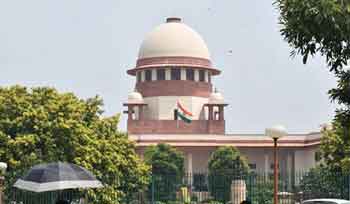– Runki Goswami –
We all live a super busy life. All of us race from one job to the other every day. A family errand could be followed by crisis at office. We are always trying to mentally rearrange our schedule to insert a new requirement popping ever minute. 24 hrs is no longer  good and we are left with a feeling that there aren’t enough hours in a day. Leading a hectic life is a part of our chosen lifestyle and practically not much can we do about it. The flip side to this is stress, anxiety and a host of other mental and physical issues. If this is reality, how to heal ourselves naturally? Is there something that can help us to recoup from certain illnesses effortlessly? Well, there is an answer to all this in Music. Do you know that music is a natural healer? Modern science permits music as a therapy – to treat chronic and terminal diseases painlessly. Let’s delve a bit more into this and see if knowing this can help!
good and we are left with a feeling that there aren’t enough hours in a day. Leading a hectic life is a part of our chosen lifestyle and practically not much can we do about it. The flip side to this is stress, anxiety and a host of other mental and physical issues. If this is reality, how to heal ourselves naturally? Is there something that can help us to recoup from certain illnesses effortlessly? Well, there is an answer to all this in Music. Do you know that music is a natural healer? Modern science permits music as a therapy – to treat chronic and terminal diseases painlessly. Let’s delve a bit more into this and see if knowing this can help!
Music – what is it? Is music the same as talking or speaking? Would you classify a vehicle honk as noise or music – how are the two different? If noise is an irregular pattern of soundwave creating disturbance lending a painful experience, music is an organized combination of sound and silent moments that leaves us relaxed and rejuvenated. We are in concord with the way music interacts with us, the wait yanks us in strange ways – cultivates, calms commiserates, exhilarates and strengthens us against the dark. What would life be without it – appallingly icy and hushed! Moreover, music is not about any physical existence unlike a painting or a sculpture. It is about sound waves hitting our eardrums in a way to make us dance, laugh or cry. There has to be something about the impact of these sound waves that billions are spent annually in making music.
If I have to define music, it would be the net output obtained after mixing right proportions of melody, harmony, rhythm and cultural aspects, without which the heartfelt connect would be a miss. If music is a global language, why is cultural sensitivity important? The cultural sensitivity of a habitation decides the type and style of music created and used. Music is a clear reflection of the sum totality of human behavior. It is a part of a man’s ethnicity, customs and social legacy. Folk music particularly provides a stimulating knowledge of history, literature, and culture of a country evident in its lyrics and composition style. For instance, there would be specific compositions for a birth of a child, marriage or even funeral.
Music, more so Indian Classical is imperative to my life and I have my parents to thank for that. So why is Indian Classical so important to me and why am I writing all this? Music gives me immense joy and for some reason I feel great when in the company of Indian music. It is believed that music can have both healing and therapeutic effects, and it is 100 percent true. Music in India was highly enhanced when Europe was still struggling to understand acoustics. As I already stated in one of my previous write-ups, music was born in the Indian subcontinent with the advent of the Vedas – Samavedas to be specific. A creation so divine had to have more than a mere feel-good factor. History has it that many sects in India chanted mantras in a typical way to alleviate certain physical ailments. Haridas Swami – guru of Tansen helped recuperate one of Akbar’s queens with a particular raga. The musical trinity of India, Saint Thyagaraja, Syama Sastri and Muthuswami Dikshitar brought a dead person back to life, cured stomach aches of many and also used music to pray for good health for mankind in general. It was done through certain raga’s in Indian classical, all of which are formed with handpicked notes to work on certain neurons of the human body. These Ragas are curate to belong a particular time slot in a day and they work best when heard or sung then. There is much more to it than just this. Elements in parent raga’s control more than 100 nerves in the body and their ascending (aaroh) and descending (avroh) notes govern moods and mobility that play an important role in the therapeutic prowess of our own music.
Dr. Aggarwal, one of the practicing neurologist of a well-known hospital in Delhi expressed a deep desire to use Indian Classical in music therapy to cure psychiatric and other diseases prevalent amongst patients in the hospital. White chatting with me, he cited anecdotes of his experience in one of the medical institutes in USA where music plays an integral part of any treatment. It was fascinating to hear that Indian Classical is used to treat oncology. Other non-terminal diseases are by default treated with music along with other regular medications. It is indeed sad that we do not realise the power of our music in our own country. The American Music Therapy Association says, “Music therapy is often used to aid improvement in multiple areas of brain function deficit and to improve quality of life, as well as facilitating physical healing. Music therapy uses multiple approaches to focus on different problems. For instance, rhythmic auditory stimulation is thought to aid movement, musical improvisation is thought to help emotional expression, while singing, oral motor and respiratory exercises are thought to assist speech. Even simply listening to music is thought to be a potential tool in the control of pain, which is notoriously problematic to treat in some cases”.
I could go on writing on this topic, however for those interested; below is a list of raga’s that help cure ailments mentioned alongside. Please note – I have only picked up some ragas which are widely known and sung by people all over. There are many other ragas from the same parent and tertiary families which can be used to treat a host of other ailments – all of which I will talk about later.
For Hypertension
Raga Bageshri, Malkauns, Todi, Pooriya, Ahir Bhairav and Jaijayanti. Raga Malkauns is specifically used to treat low blood pressure. Raga Todi and Ahir Bhairavis a miracle pill for High BP patients and as a medication can be heard anytime in the day.
Mind: Anxiety and Stress and Intellectual Excellence
Raga Kaafi and Darbaari, for mental strength and stress, Raga Shiva Ranjani—for intellectual excellence, Raga Khamaj particularly for Hysteria and Raga Sahana for control over anger and inner violence. Raga Darbari helps with relieving stress if heard late night and Raga Bhimpalasi if heard in the noon.
Overall stomach, Acidity, constipation, intestinal gas and fevery due to stomach infections
Raga Pooriya Dhanasri and Deepak for Acidity, Raga Jaunpuri and Gunkali for constipation, Malkauns for intestinal gas and fever. Basant Bahar cures Gall Stones. Raga Pooriyais also known to cure colitis and anaemia if heard in the evening.
Heart Problems
Sarang family raga’s, Kalyani and Charukesi work amazingly well for heart blockages and other heart diseases.
Headaches
Raga Asaveri, and Poorvi are drugs to get rid of headaches. Raga Todi is necessary for headache due seasonal colds, while Raga Asavari also holds good for psychological disorders. Raga Bhairavi helps cure headaches for Sinusitis
Insomnia
Raga Bageshri cures insomnia if heard at night and Raga Kaafi and Khamaj also help a lot.
Diabetes
Raga Bageshri and Raga Jaijayanti for diabetes whether you are at a borderline or on insulin.
Oncology
Raga Bhairavi and Raga Lalit are played particularly during chemotherapy sessions. Patients taking music therapy are believed to recuperate much faster than those only on chemical drugs.
Asthma
Raga Malhar, Mian ki Malhar and Darbari Kanada are known for their healing properties for chronic asthma.
Blood Purification and Skin Issues
Raga Hindol and Marwa not only purify blood and help maintain the best of skin possible, but also cure high fevers caused due to Malaria and Dengue.
Hormonal Problems and PCODs
Slow songs at a lower to medium octave as in Bhajans help in relaxation. They lead to favorable hormonal changes and cures PCODs.
Other than the ragas mentioned above, there have been several instances where Bhupali has helped wake up people from coma, Shiv Shambhu bhajans have helped cure back pain and slip disc, Ganpati bhajans have evoked confidence and dispelled fear, Krishna Bhajans have been used to treat depression and stress, Raga Hanswadhani has helped to regenerate cells and bring back energy after a health break-down, Raga Kaafi has been used to treat depression, Shiv Ranjani for sun stroke, Basant for paralysis and Neelambari (Carnatic) for Kidney concerns. What more, music therapy is also used on deaf patients. The vibrations of music – its rhythm is good enough to treat the hearing impaired.
Leaving you with a tip: Try listening to Raga Bhairavi when having a toothache, it does wonders. Also try playing this raga to T B patients, you will see the magic.
This information is for general use and all of us can use it in our regular lives for healing. However, a formulated method is observed when used as a therapy. Just like any other medicine, music therapy has its dosage and duration to be followed which a certified therapist can help you with. Do write in to me at goswami.runki@gmail.com to know more about music therapy and ways of using the same. Music is a part of me and I would love to share any knowledge around it at any given point of time.
___________
Runki Goswami is a music director and singer and is known for her contribution in Indian regional cinema. Belonging to a family of musicians, Runki is no exception as she has always been pursuing it since the age of 3 and promises to hold on it until her last breath.
Runki Goswami (Runki Laik maiden name) has been learning Hindustani Classical music since childhood and was exposed to stage performances since the age of six. After this followed numerous stage performances while representing her school in various competitions, AIR recordings and other private shows.
She is an ideal example for all young talents who give up their talent for the corporate world. She truly is brilliant with her time management skills and enjoying the very best of both worlds.
Disclaimer : The views expressed by the author in this feature are entirely her own and do not necessarily reflect the views of INVC NEWS.















